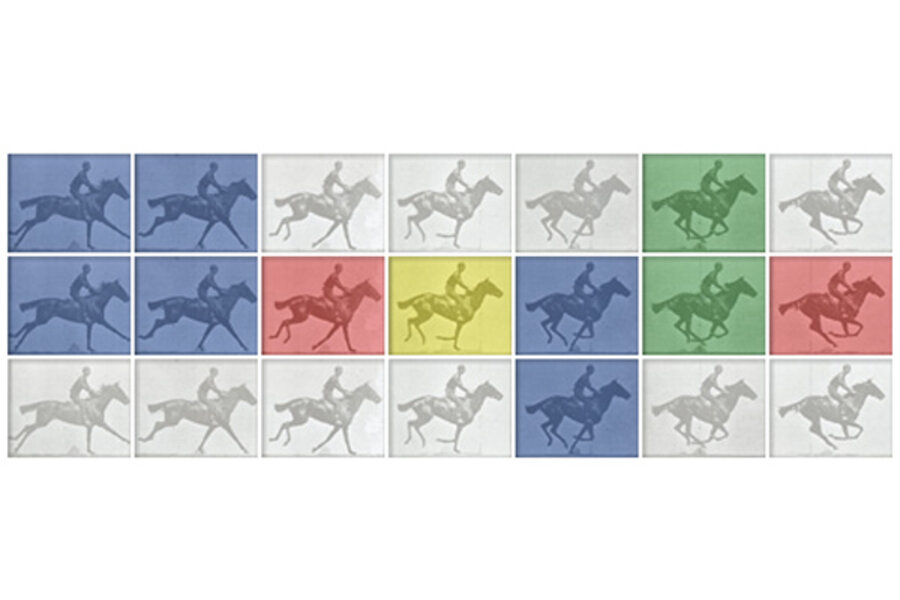How Edward Muggeridge became Eadweard J. Muybridge
Eadweard J. Muybridge revolutionized photography, cinematography, and possibly even zoology. In his Google doodle on Monday, the search engine harkens back to his most famous work: a series of shots that capture the full gallop of a horse. Muybridge proved that, for a brief moment, all four of a horse's legs leave the ground.
The Monitor has dug into his breakthrough Zoopraxiscope and how Muybridge got away with murder. But there's another interesting aspect to Muybridge, one that makes him seem more like a fictional character than a real person. Muybridge constantly reinvented himself, adopting at least five different names.
The man that died as Eadweard J. Muybridge grew up in England as Edward James Muggeridge. His transformation took many steps.
Upon moving to California, the British photographer settled on a name that matched the Spanish influence of his surroundings: Eduardo Santiago. Both are direct translations of Edward and James. (The Catholic St. James is called St. Santiago in Spanish.)
He later changed his last name from Muggridge to Muygridge and eventually landed on Muybridge.
But about how Eadweard? It's pronounced the same way as Edward. So why the change?
His hometown of Kingston upon Thames has a "famous monument, a stone upon which seven Saxon kings were crowned," writes Paul Hill in his book "Eadweard Muybridge." The monument "had been inaugurated in 1850 and on its [base] was inscribed the name of each king. He took for himself the spelling of one of these names – Eadweard."
Nowadays, we call King Eadweard simply King Edward.
Muybridge even adopted the pseudonym Helios, the Greek sun god – perhaps a reference to the sun's role in photography. He gave that name to his son, Floredo Helios Muybridge.
While his transformations are peculiar – explained away by some as part of his generally volatile disposition (he did shot a man dead, after all) – his choices of names are equally odd. For a man on the cutting edge of film technology, he picked curiously antiquated names. Did he want the gravitas of an ancient moniker? Did his artistic flair manifest itself in bizarre spellings?
In any case, he may have been more literal than even he anticipated when he wrote in 1852 that, “I am going to make a name for myself. If I fail, you will never hear of me again."
For more tech news, follow us on Twitter @venturenaut. And don’t forget to sign up for the weekly BizTech newsletter.





